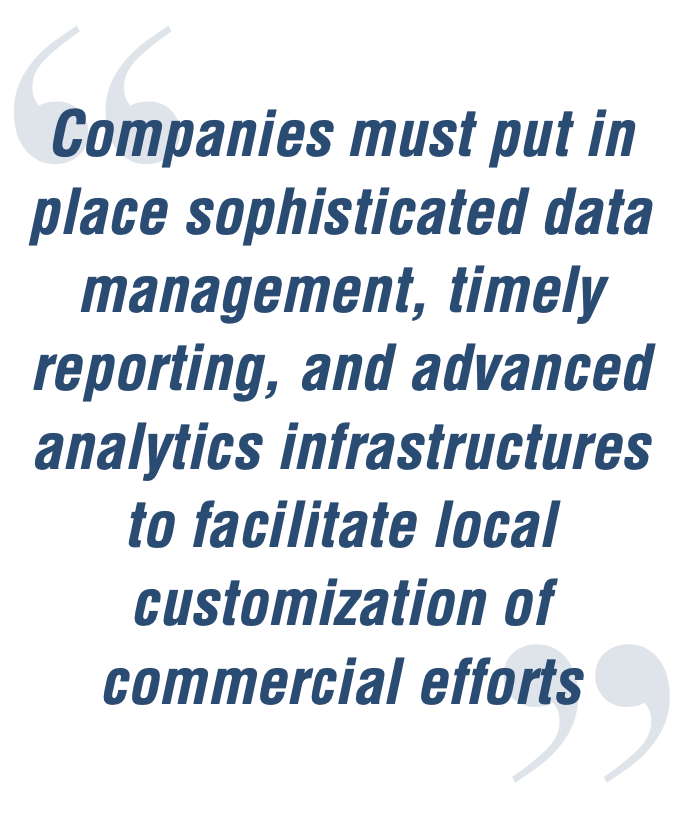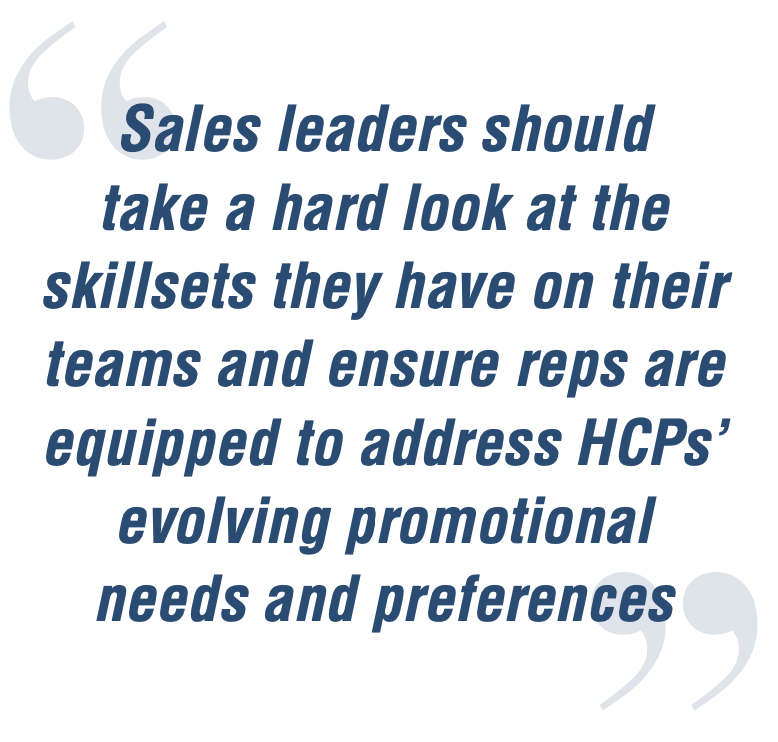Staying the Course: Double Down on Launch Agility
In today’s fragmented commercial environment, navigating a more complex set of challenges while adapting new approaches to product launch is critical for biopharma brand teams.

As biopharmaceutical companies eye product launches in a commercial environment that has been transformed by the COVID-19 pandemic, they must adjust their launch preparations to account for a more complex, fragmented, and dynamic landscape. The challenges, as we see it based on our commercial effectiveness work with biopharma companies, are threefold.
The channel explosion
Like many of us, healthcare providers (HCPs) now conduct their business in many locations and settings. While some patient visits are face-to-face, the use of telehealth has increased significantly during the pandemic. Similarly, HCPs’ interactions with biopharma sales reps may be in person, but increasingly happen via video, text message, and email. HCPs and patients alike access information and take action via various platforms and channels today. As a result, biopharma companies must navigate (and create custom messaging and materials for) an ever-expanding mix of sales and marketing channels to engage prescribers.
The local focus

Significant differences continue to exist between therapeutic areas, geographies, and health systems when it comes to rep access, physician engagement preferences, market access, and more. As a result, biopharma manufacturer’s commercial strategies may have to differ meaningfully from territory to territory or from team to team. Companies must put in place sophisticated data management, timely reporting, and advanced analytics infrastructures to facilitate this local customization of commercial efforts.
The keys to launch success today
During a product launch, a company has a small window during which to make an impact and earn an ROI on drug development efforts. This has always been the case, but ensuring a successful product launch is more complex today due to the challenges outlined earlier. With these three challenges in mind, what can biopharma commercial leaders do to ensure successful launches in today’s dynamic environment? We see a few keys to success:
Invest early in HCP relationships. Too often, biopharma companies launch with high expectations but overlook pre-launch relationship-building with HCPs. This effort is crucial to maximizing uptake of a new product—especially a first-of-its-kind therapy.
We recently did a post-launch promotional impact analysis for a drug manufacturer that revealed that the physicians the company engaged with before launch were far more reliable prescribers than those they didn’t connect with until after launch. This might seem like an obvious conclusion, but we see many companies neglect this crucial pre-launch relationship-building.
Companies must lay the groundwork for eventual product promotion by engaging with HCPs pre-launch. This engagement can include education about the disease state and information-gathering around office protocols and promotional preferences. This early relationship-building effort can help a team hone its target list and create tailored outreach plans that drive launch success.
Account for a wide array of scenarios. In today’s fragmented environment, commercial teams should deploy advanced analytics-based scenario testing (using methods like Monte Carlo simulations) to understand potential ranges of outcomes across geographies, HCP and account segments, health systems, etc. This effort will help teams create more accurate forecasts and set appropriate sales goals. From there, propensity and preference analyses can help teams uncover HCP preferences and optimize targeting, segmentation, and sales force size and structure. Advanced analytics fuels these efforts and the tailored omnichannel marketing approaches biopharma companies must deploy today to effectively engage HCPs.
Redefine sales team role. Are the skills your sales reps need today the same as they were 15 months ago? Probably not. So, build a sales force that includes the full array of skills needed to sell in today’s more complex environment. Face-to-face sales skills remain important. But reps must also be adept at digital promotion and comfortable navigating various promotional touchpoints with physicians.

Sales leaders should take a hard look at the skillsets they have on their teams and ensure reps are equipped to address HCPs’ evolving promotional needs and preferences.
Alongside this role redefinition, biopharma manufacturers should consider their incentive compensation structures. As HCP engagement continues to evolve, companies could consider rewarding reps for the results of digital efforts. For example, could a company embed a management by objective (MBO) tied to email open rates or click-throughs into an incentive compensation plan? A company would need to carefully measure results tied to this MBO and properly implement it to ensure it drives the right behaviors and fairly impacts compensation. But as sales forces’ responsibilities grow and sales practitioners become more diversified in their skillsets, companies must match what they are asking of their reps by innovating on the incentive compensation front.
Consider appointing an “engagement QB.” The importance of “breaking down silos” is an age-old business truism, but it’s crucial in the dynamic launch environment biopharma companies face today. With so many potential touchpoints with HCPs, sales and marketing teams must collaborate closely to align messages, oversee and track interactions with HCPs, and share insights.
A key enabler of this collaboration is robust and easy-to-use technology. All the customer intelligence a company has must be accessible across the commercial team. Key stakeholders across commercial operations should be able to easily see touchpoints with HCPs, HCP profile information (such as hospital affiliations and group purchasing organization relationships), and prescribing behavior. If data isn’t integrated and well-organized in a powerful and easily navigable platform, it will be difficult for sales reps to agilely adjust to changing circumstances and customize outreach to HCPs.
A biopharma company can also improve collaboration by appointing an “engagement QB” to oversee the various sales and marketing touchpoints with HCPs and ensure insights derived from advanced analytics efforts make their way to the various teams delivering promotion to HCPs—from the sales force to the marketing team to digital agencies and vendors. This QB could reside on the sales or marketing teams, depending on the needs and existing structures of the organization, but, to be effective, the QB needs the endorsement of the company’s most senior commercial executive. No matter where they reside, the QB would ideally bring together the various threads of a company’s commercial efforts and help the organization think in a creative and innovative way about how to maximize HCP engagement across channels.
Embrace dynamic launch
Biopharma companies can embrace the dynamic nature of product launches today by working to create more agile launch plans. Enable these agile launch plans by perfecting fundamentals (e.g., data management, relationship-building), breaking down silos within a commercial organization, and strategically incorporating advanced analytics techniques into launch efforts.
Kevin Frymire, Partner, Dan Schulman, Partner, David Laros, Vice President of Digital Strategy, Analytics, and Insights; all with Beghou Consulting

The Misinformation Maze: Navigating Public Health in the Digital Age
March 11th 2025Jennifer Butler, chief commercial officer of Pleio, discusses misinformation's threat to public health, where patients are turning for trustworthy health information, the industry's pivot to peer-to-patient strategies to educate patients, and more.
Navigating Distrust: Pharma in the Age of Social Media
February 18th 2025Ian Baer, Founder and CEO of Sooth, discusses how the growing distrust in social media will impact industry marketing strategies and the relationships between pharmaceutical companies and the patients they aim to serve. He also explains dark social, how to combat misinformation, closing the trust gap, and more.